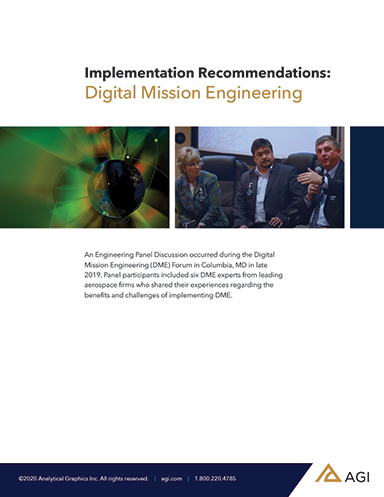
August 27, 2020
An Engineering Panel Discussion occurred during the Digital Mission Engineering (DME) Forum in Columbia, MD in late 2019. Panel participants included six DME experts from leading aerospace firms who shared their experiences regarding the benefits and challenges of implementing DME.
Digital Mission Engineering (DME) is an approach to developing and operating engineered systems in which you use digital modeling, simulation, and analysis to incorporate the operational environment and evaluate mission outcomes at every phase of the life cycle. Simulating model-based systems in a common and collaborative physics-based environment creates a true, mission-level, digital twin of the mission.
DME was invented to meet the demand to deliver complex systems rapidly. Legacy engineering processes consist of multiple unconnected digital models, which lead to incompatible data, inconsistent test regimens across life cycle phases, and problems that can go undetected until very late in the life cycle. These inefficiencies result in higher costs and delays. As you will see in this report, DME tackles all of these problems head-on.
While there are clear and unquestionable benefits in implementing this transformational approach to engineering, challenges remain.The panel identified the most prevalent challenges and offered recommendations and insight on how to overcome them.
Fill out the information below to download the resource.
Latest News








